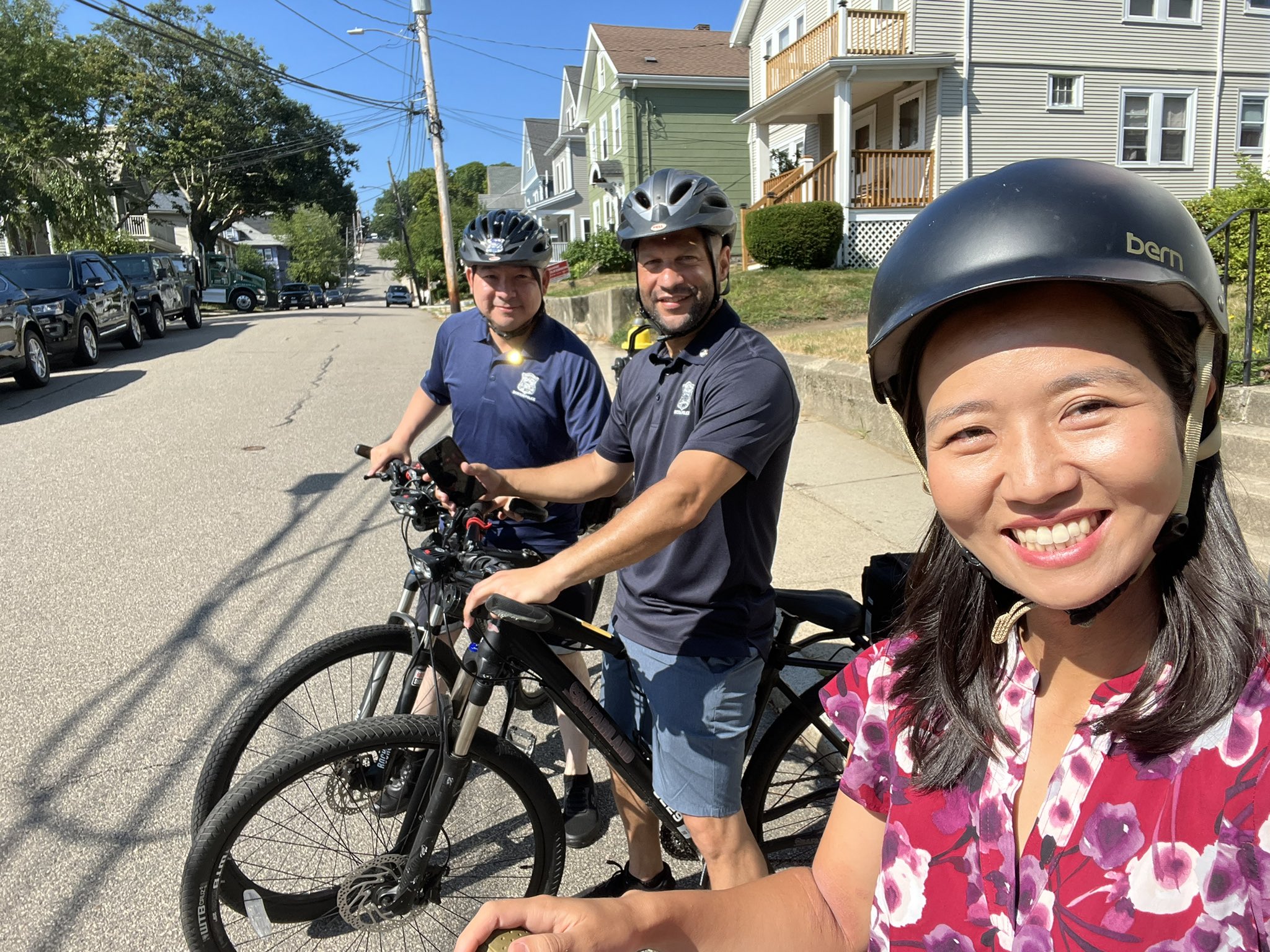El 17 de noviembre, el plan de Calles Lentas de South Street Baja y el Vecindario Cercano fue aprobado por la Comisión de Mejoramiento Publico, Public Improvement Commission (PIC). Este logro fue la culminación de años de abogacía por parte de residentes y el trabajo del equipo de Calles Lentas de Boston, Boston Slow Streets team. Estos avances serán construidos en 2023. Vea las especificaciones:
Después del voto, el Jefe de Calles, Jascha Franklin-Hodge tomó un momento para decir unas palabras sobre el compromiso por parte de la administración para reconstruir las calles de Boston incluyendo este extracto:
“Debemos hacer más, debemos hacerlo más rápido – para reconstruir nuestras calles con el fin de que sean seguras y cómodas para todos. Y debemos ver y cambiar las políticas y los procesos que muchas veces resultan en un proceso prolongado y tardanzas excesivas al hacer este tipo de trabajo crítico. Así que solo quisiera decirles a los miembros del público aquí que yo al igual que la administración estamos comprometidos a hacer estos cambios.”
Nosotros aplaudimos esta declaración y hemos incluido una transcripción completa con sus palabras abajo. Mientras el programa de Calles Lentas en Vecindarios, Neighborhood Slow Streets, a sido un programa exitoso, este solo no puede solucionar el peligro a nivel general que viven las personas vulnerables en vecindarios alrededor de la ciudad. Nosotros alentamos a la ciudad que cumplan con su compromiso de acelerar el paso de cambio, y esperamos trabajar en conjunto para brindar calles seguras a Roslindale.
Comentarios completos:
“Antes de que sigamos quisiera quitarme el puesto de presidencia de PIC y usar esta oportunidad para decir algunas cosas de parte de la administración de la Alcaldesa Wu en mi capacidad como su Jefe de Calles y Comisario de Public Works. En primer lugar, quisiera decir gracias a ti Stephanie ([Seskin (Directora de Transportación Activa del Departamento de Transportación de Boston)] y su equipo por todos sus esfuerzos trabajando en este proyecto y durante los últimos años – yo se que estos esfuerzos han involucrado (como hemos escuchado) extensa divulgación pública, juntas públicas, oportunidades para dar comentarios, y múltiples rondas de revisión de diseño. Y llegar hasta este punto ha requerido bastante inversión de tiempo y energía por parte del equipo de la ciudad así que estoy muy agradecido por eso.
En segundo lugar, quisiera decir gracias a los miembros de la comunidad quienes han luchado por este proyecto, y quienes han impulsado a la ciudad a crear calles más seguras en los vecindarios por años y por décadas en algunos casos. Pedimos mucho de ustedes, incluyendo venir a esta junta en el medio del día en un Jueves, y eso es solo para obtener algo tan fundamental como una calle donde se sientan seguros.
La tercera cosa que quisiera decir es que la ciudad necesita mejorar. No debería tomar esfuerzos extraordinarios para obtener una básica infraestructura segura en nuestras calles. No deberíamos pedirles que alegen con nosotros por su seguridad o la de sus hijos y vecinos. Casi todos los días escucho de personas en vecindarios de cada parte de Boston sobre el miedo que sienten en nuestras calles – y si, esos sentimientos si importan. Y yo veo las estadísticas – todavía tenemos miles de personas cada año que son lesionadas en nuestras calles y casi todos los años más de una docena de personas mueren en esas mismas calles. Yo se que podemos y debemos hacer más para producir mejor infraestructura que sea más segura en la ciudad de Boston.
Y quisiera decir que lo que acabamos de aprobar, lo que repasamos hoy representa mejores prácticas establecidas para las calles de vecindario. Estas se reflejan en la guía de la ciudad de calles completas: en la guia de calles urbanas de NACTO, en publicaciones de MassDOT, en publicaciones de la Administración Federal de Carreteras, Federal Highway Administration. Estos cambios no son novedosos, no son excepcionales o experimentales, y su eficacia no está en cuestión. Lo que aprobamos hoy son un set de cambios que acercaran a estas calles más cerca hacia lo que décadas de investigación y experiencia han mostrado que resultan en calles más seguras para todos los usuarios. Y entonces, la ciudad siempre aceptara y tomará en cuenta los consejos del público en cualquier proyecto que hagamos, pero la seguridad no debe de estar a debate y no debería de ser tan difícil o tomar tanto tiempo como lo toma ahora para obtener que estos tipos de cambios de seguridad sean implementados en la ciudad de Boston. Así que digo esto para reconocer que nosotros como líderes de la ciudad tenemos trabajo que hacer.
Debemos hacer más, debemos hacerlo más rápido – para reconstruir nuestras calles con el fin de que sean seguras y cómodas para todos. Y debemos ver y cambiar las políticas y los procesos que muchas veces resultan en un proceso prolongado y tardanzas excesivas al hacer este tipo de trabajo crítico. Así que solo quisiera decirles a los miembros del público aquí que yo al igual que la administración estamos comprometidos a hacer estos cambios. Estoy muy emocionado de ver estos mejoramientos ser implementados en Roslindale el próximo año, y eso pasará mientras trabajamos para acelerar el paso de cambio – cambios como estos en vecindarios a través de Boston. Así que gracias, y solo quería tomar un momento para expresar mi posición sobre esto.”








